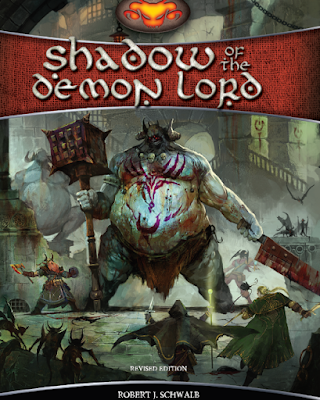Pages
Wednesday, June 30, 2021
One MILLION things... in one SINGLE table!
Tuesday, June 29, 2021
Maze Rats (Deal of the Day)
Here is the blurb:
Maze Rats is an RPG and sandbox toolkit for old-school-style adventuring. It contains a single, compact page of rules, a one-page character creation guide, a hand-drawn character sheet, and eight pages of 36-item random tables, rollable with two six-sided dice. Each page contains 9-12 tables, covering spell generation, monster generation, NPCs, treasures, cities, wildernesses, and dungeons. If you run (or have always wanted to run) open sandbox adventures, Maze Rats offers everything you need in a compact, easily-referenced format. Also included is two pages of advice for preparing and running open-world games in the OSR style.
The game system itself is 2d6 based. Character are extremely quick to generate, making it great for convention games, one-shots, or introducing new players. The game is highly lethal, and assumes a style of play where caution is essential to long-term survival. It is technically classless, but the leveling options allow players to specialize in fighting, thievery or wizardry or some mixture of the three. Magic is simple and chaotic, with new randomly-generated spells filling the magic-user's head each night. Everything about the game is designed to be as clean, fast, and intuitive as possible, while driving players towards creative solutions rather than brute force (though brute force is always an option).
*By purchasing stuff through affiliate links you're helping to support this blog.
Saturday, June 26, 2021
Fantasy "races" - stereotypes vs. cosplay
Nevertheless, the idea of “savage, entirely evil races” is seem as ridiculous propaganda by many humanoids. The Laestrygonian philosophers, for example, laugh at the notion that a black widow spider is “evil” for consuming its mate or that a wolf is “immoral” when it kills an innocent child. The fact that the Laestrygonian themselves enjoy eating both spiders and children should not influence our perception of their philosophy, which is based on purely logical grounds.
Monday, June 21, 2021
Shadow of the Demon Lord, session 0 - first impressions
These tables are good, but incredibly uneven. You can end up with a "servant", "A pair of boots that grants you 1 boon on rolls to sneak or a gray cloak that grants you 1 boon on rolls to hide", "a can of beets", "a pungent stench" or a "bizarre fetish".
*These are all Affiliate links - by using them, you're helping to support this blog!
Saturday, June 12, 2021
The individualism of modern D&D
Now that D&D is trying to get rid of alignment (in the most recent books), I'd like to briefly go back to the topic. This post is not only about alignment, but it plays an important part.
If you find alignment too restrictive, we could go the opposite way - adopt one or multiple "mien" from Troika* (e.g., Hungry, Confused, Protective, Greedy, Conniving), one or multiple goals from Teratogenicon, or let behavior be described by any appropriate expression (chaotic, lawful, greedy, hungry, indifferent, territorial, aggressive, shy, etc.). Of course, each individual creature might be different - but having some way to start the process is useful.








